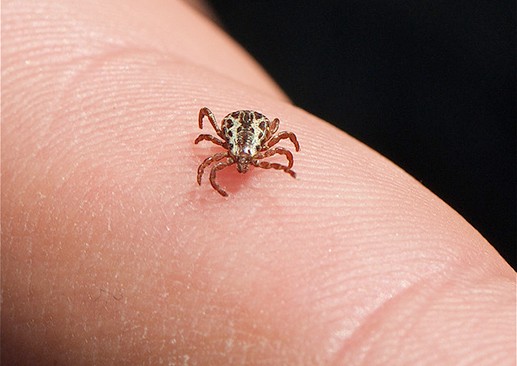Summer is the season for enjoying sunshine, beaches and camping in the woods. Unfortunately, it’s also the season for one of the most pesky insects in the natural world: ticks.
They’re one of the last things people want to think about while they’re enjoying the nice weather, but ticks are a problem in a lot of warm and wet areas across the Midwest and East Coast. Thanks to Lyme disease, transmitted through bites from ticks infected by the Borrelia burgdorferi bacteria, they’re a costly problem as well.
Quartz reported last week on the growing number of Lyme cases in the United States every year. The US Centers for Disease Control estimates that 300,000 residents in the country contract Lyme, which could actually be a lot more — as many as 3 million cases a year — because of how inconsistently the condition is diagnosed.
Lyme is a problem in Europe as well. The World Health Organization records close to 35,000 new cases there each year. Others estimate it’s closer to 65,000 cases annually.
The problem, according to the Quartz article, has two driving factors: global warming and an increase in the population of creatures ticks bite for blood. With the disease spreading, treating it in humans is turning into an economic burden.
Research from the Johns Hopkins Bloomberg School of Public Health found that Lyme disease costs the health care system up to $1.3 billion a year in the US. That breaks down to an average of about $3,000 per patient.
The high costs come from an increase in doctor and hospital visits from those infected, who suffer from lingering symptoms like fatigue, nerve and joint pain and cognitive troubles. Some patients report symptoms that last for weeks, months or even years after an initial regimen of antibiotics used to fight the disease after it is diagnosed.
Looking at the research, people with Lyme disease had 87 percent more visits to the doctor and 71 percent more visits to the emergency room within the first year following a diagnosis. They were also 5.5 times more likely to have a diagnosis of debility and excessive fatigue.
The best bet for not contracting Lyme is to avoid ticks altogether. The next best solution is making sure to remove a tick quickly after being bit and getting treated immediately.
Most human Lyme infections, however, come from Nymphs, which are half the size of adult ticks and much more difficult to find, according to Quartz. That means the problem could be difficult to fix.
For story ideas, talk to local healthcare providers in your area about how serious Lyme has been this summer and in the past. Are they seeing more cases? What does that mean for costs? Find out if local employers are urging preventative measures in tick-laden areas.
STORY IDEAS










